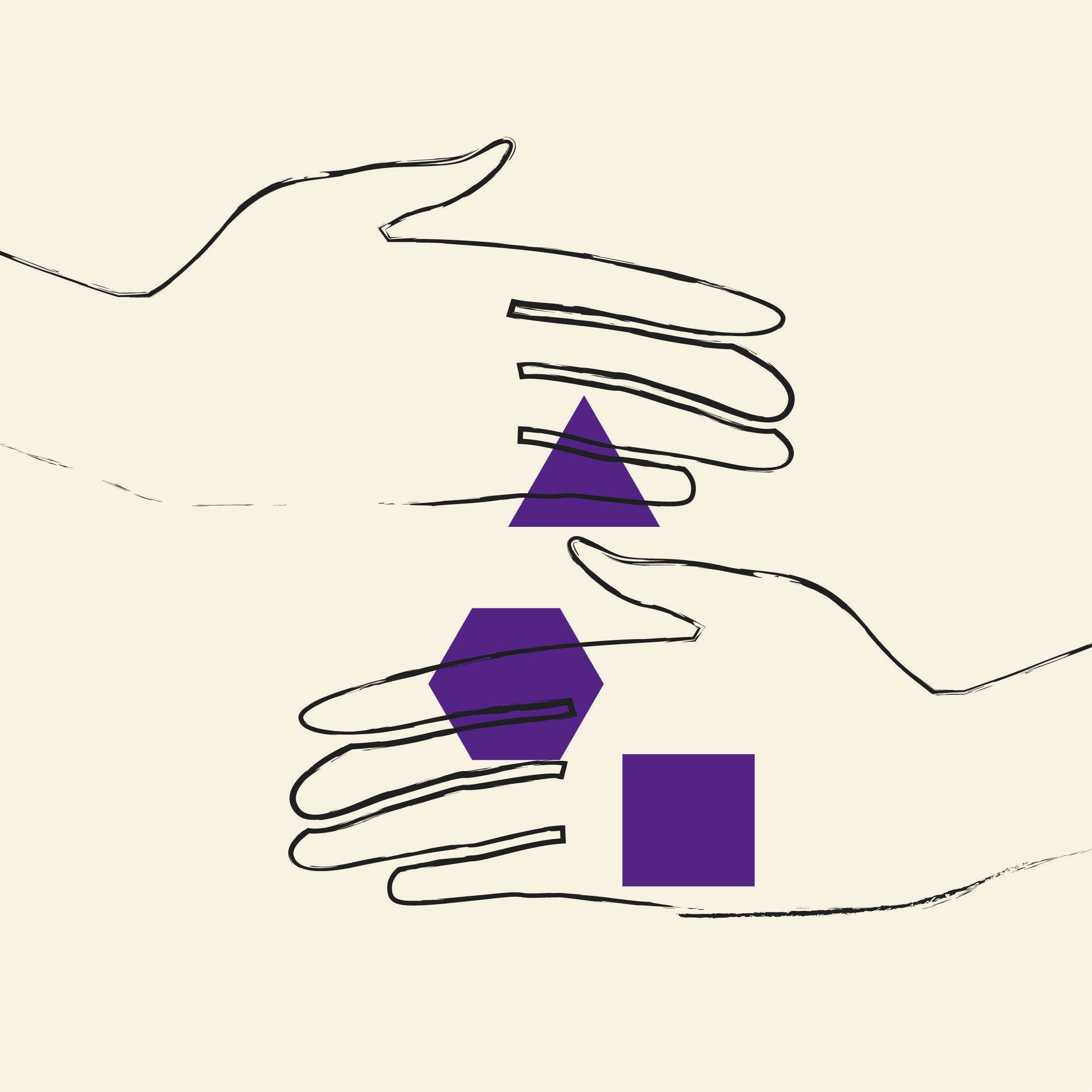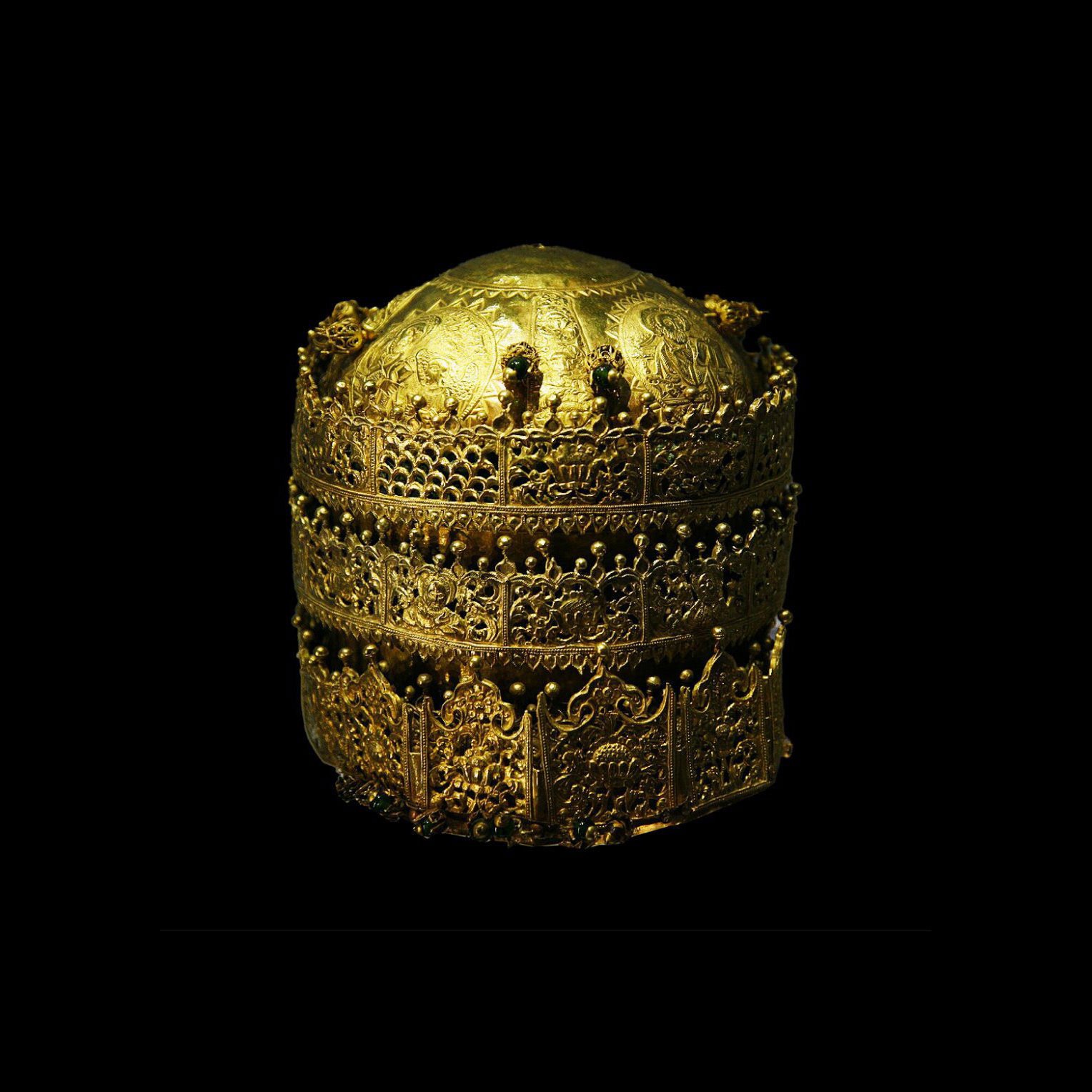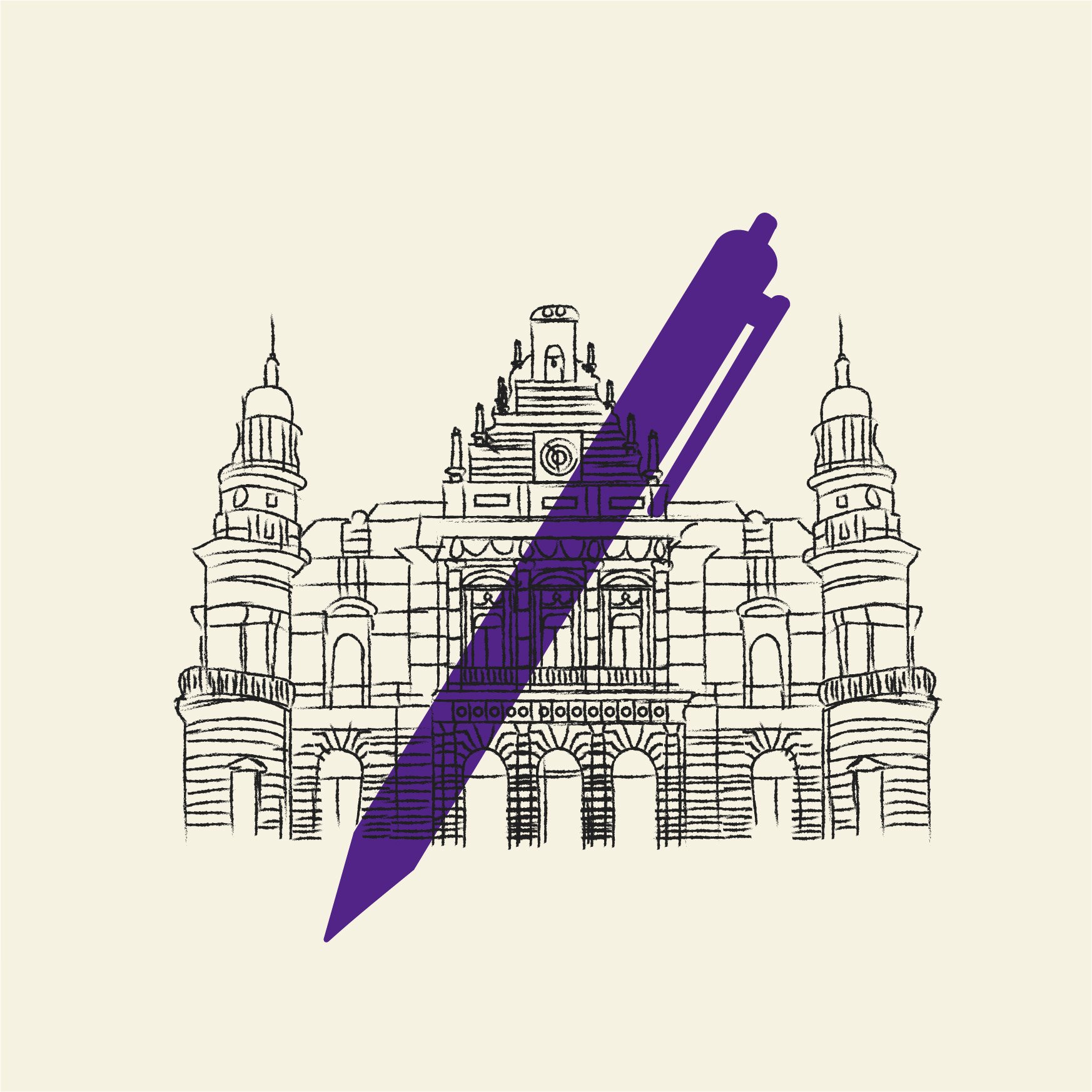The Other Crown
Why are Ethiopian jewels still in a London museum?
APRIL 25, 2023
The gold crown sits to one side of a dimly-lit hall punctuated by stained-glass panels in the “Sacred Silver” gallery of the Victoria and Albert Museum in London, as if implicitly apologizing for its presence among mitres, reliquaries, processional crosses and other religious objects from across Europe. Composed of three filigreed tiers embossed with depictions of the apostles and a dome depicting the four evangelists, the crown is displayed alongside a body of literature that leaves no room for doubt about its provenance or travels. The explanatory text includes a timeline of events, beginning with the 1855 accession of its former owner, Emperor Tewodros II of Ethiopia; an account of the Maqdala campaign that saw British troops capture the emperor’s fortress and burn it to the ground; and a quote from a British parliamentary debate in 1871 about the crown and an accompanying solid gold chalice. The presence of the crown in the Victoria and Albert Museum demonstrates how far-reaching British military power was in the 19th century—that it could invade a country it had no interest in ruling—and how ambivalent institutions are about that power today.
In April 1868, the British attacked Tewodros II in retaliation for the imprisonment, four years earlier, of some European missionaries and the British consul. In the face of this attack, Tewodros killed himself with a pistol that had been given to him by Queen Victoria. The British destroyed the mountain fortress of Maqdala and auctioned off much of their plunder to secure money for their troops. The army found an eager buyer in Richard Holmes, an assistant in the British Museum’s department of manuscripts, who snapped up the crown and chalice for £4 from a passing soldier. (He then had to promise the army that his museum would pay the £2,000 at which it was valued for its metal.) The crown was obviously precious, but its plunderers and purchasers knew nothing definite about it and made no attempt to find out more. It had long been assumed that the crown was either made for Tewodros’s coronation or for the leader of the Ethiopian Orthodox Church, until an article published in 2006 by Jacques Mercier in Apollo magazine argued that the crown dated from the 1740s, more than a century before Tewodros’s reign.
Only the prime minister, William Gladstone, addressed the question in moral terms: “he deeply lamented, for the sake of the country, and for the sake of all concerned, that these articles…were thought fit to be brought away by a British army.”
Once crown and chalice were in England, the debate about what to do with them began almost at once. It has never stopped. In June 1871, the House of Commons discussed whether the government should buy the items—at that time deposited at the British Museum, but still regarded by the British Army as its property—for the nation. The official record of the debate notes a former colonel’s regret that soldiers were still waiting for their prize money: the British Museum was still to pay the promised £2,000. It further mentioned the Treasury’s reluctance to put up the money for objects that “competent authorities” had described as having “no artistic merit whatever.” One Conservative member, Edward Eastwick, expressed the desire that the government should buy them in order to return to the Abyssinian government as gifts. Still, only the prime minister, William Gladstone, addressed the question in moral terms: “he deeply lamented, for the sake of the country, and for the sake of all concerned, that these articles…were thought fit to be brought away by a British army.” The government eventually stumped up the cash and gave the items on long-term loan to the South Kensington Museum (the forerunner of the Victoria and Albert Museum).
The crown is the most obviously precious object looted from Maqdala, a mountain fortress in the Amhara region of Ethiopia, now the site of a village called Amba Mariam. But it has several more reclusive relatives in London: sacred wooden and stone tablets known as “tabots,” replicas of the Ark of the Covenant meant to be seen only by priests. Eleven tabots, nine of which can be traced directly to Maqdala, are in a sealed storeroom in the British Museum. Another is hidden from view at Westminster Abbey. When an Ethiopian priest based in London tried to arrange for priests of the Orthodox Church to see it, the Church of England wouldn’t let them. (Even a former head of the Church of England has said that he is “astonished and saddened” that the tabot has not been returned.)
There was human plunder, too. Tewodros’s heir, Prince Alamayu, was taken by a captain in the British Army to England at seven years old. He died about 10 years later and was buried in the catacombs of St George’s Chapel at Windsor Castle. Repatriating his remains would be impossible, an official in the royal household wrote to the Ethiopian president in 2006, because of the difficulty of identifying them. When the Scheherazade Foundation, a private foundation in the UK, made the same request in 2021, the Royal Household said that it could not be done “without disturbing the resting places of others in the vicinity.” In 2019, the National Army Museum in London returned two locks of the Emperor’s hair to the government of Ethiopia. And in 2021, the Scheherazade Foundation stepped in to purchase Maqdala artefacts at auction from private dealers, later donating them to the Ethiopian National Museum in Addis Ababa.
If the gold crown were less valuable, it might have left the Victoria and Albert long ago. In 1924, the regent and crown prince (Ras) Tafari Makonnen (the future Ethiopian Emperor Haile Selassie), made a tour of Europe in an unsuccessful bid to gain access to the sea for his landlocked nation. In London, on the advice of a British Foreign Office keen to befriend an independent African country that had just joined the League of Nations, George V told the prince he was returning what he called “the crown of Theodore.” But what the British consul-general in Addis Ababa handed over a year later was a second crown looted from Maqdala. Made of silver-gilt, it had been in the V&A since 1869 and was described in a Foreign Office memo as “a highly ornate and rather barbaric headgear,” while its gold counterpart “though less showy, is from an artistic view the superior article.” The whereabouts of the silver crown are unknown and have been a point of contention in restitution battles—and when, in 2008, the Ethiopian president, Girma Wolde-Giorgi, requested the return of all Maqdala objects from UK museums, then-director of the V&A, Mark Jones, made a point of asking where it was.
In Ethiopia, the 150th anniversary of the Maqdala expedition in 2018 led to the formation of the Ethiopian National Heritage Restitution Committee and renewed interest from the government in getting the items back. The V&A’s director, Tristram Hunt, expressed the museum’s willingness to return the crown and other Maqdala artefacts to Ethiopia on long-term loan. Those conversations stopped, explained Alula Pankhurst, a member of the Ethiopian National Heritage Restitution Committee, for a number of reasons: a social media and diaspora backlash against the idea of a loan without a transfer of ownership; the decision to split Ethiopia’s culture and tourism department into two, and to assign responsibility for heritage to the latter; the pandemic and, most importantly, a devastating two-year war between the central government and the government of Tigray in the north, which killed as many as 600,000 people. “People’s attention here was very much on other things,” Pankhurst said.
The crown has no business being in London, where it sits in what amounts to open storage. Yet its meaning may be contested in a different way once it gets home.
In a very different register, the same could be said of the UK, where the British government has displayed little appetite for restitution. Both the British Museum and the V&A are prevented by separate Acts of Parliament (the British Museum Act of 1963 and the National Heritage Act of 1983) from disposing of works in their collection, hence the V&A’s offer of a long-term loan. The current British government has no desire to amend those laws; it is not clear if the current opposition will feel differently.
Tewodros is now regarded as a moderniser and as a nationalist who sought to unify Ethiopia. His decision to die rather than be taken prisoner made him a hero. Today, as Ethiopia is going through political turmoil, Pankhurst said that “there is a younger generation that harks back to a golden age … so history becomes one way of talking about the present.” The crown is both a symbol of the emperor’s specific ambitions – he took it from the ancient capital of Gondar, which he pillaged in the mid-1860s as a show of strength—and a meeting of two much older traditions: that of a monarchy that claimed its descent from King Solomon and the Queen of Sheba, and an Orthodox Church established in the fourth century. Tewodros’s seizure of the crown underscores its role as part of a long history of national mythmaking and political violence. The crown has no business being in London, where it sits in what amounts to open storage. Yet its meaning may be contested in a different way once it gets home.
✺ Published in “Issue 3: Reparation” of The Dial
PHOTO: Edited version of photo by Junho Jung. At Victoria and Albert Museum, London, England. July 17 2008. (via Wikimedia, licensed under CC BY-SA 3.0)



